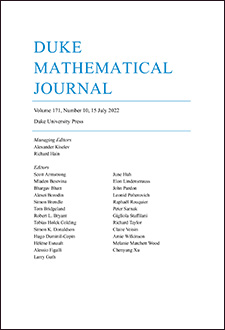Abstract
The positive mass theorem states that a complete asymptotically flat manifold of nonnegative scalar curvature has nonnegative mass and that equality is achieved only for the Euclidean metric. The Riemannian Penrose inequality provides a sharp lower bound for the mass when black holes are present. More precisely, this lower bound is given in terms of the area of an outermost minimal hypersurface, and equality is achieved only for Schwarzschild metrics. The Riemannian Penrose inequality was first proved in three dimensions in 1997 by G. Huisken and T. Ilmanen for the case of a single black hole (see [HI]). In 1999, Bray extended this result to the general case of multiple black holes using a different technique (see [Br]). In this article, we extend the technique of [Br] to dimensions less than eight. Part of the argument is contained in a companion article by Lee [L]. The equality case of the theorem requires the added assumption that the manifold be spin
Citation
Hubert L. Bray. Dan A. Lee. "On the Riemannian Penrose inequality in dimensions less than eight." Duke Math. J. 148 (1) 81 - 106, 15 May 2009. https://doi.org/10.1215/00127094-2009-020
Information





